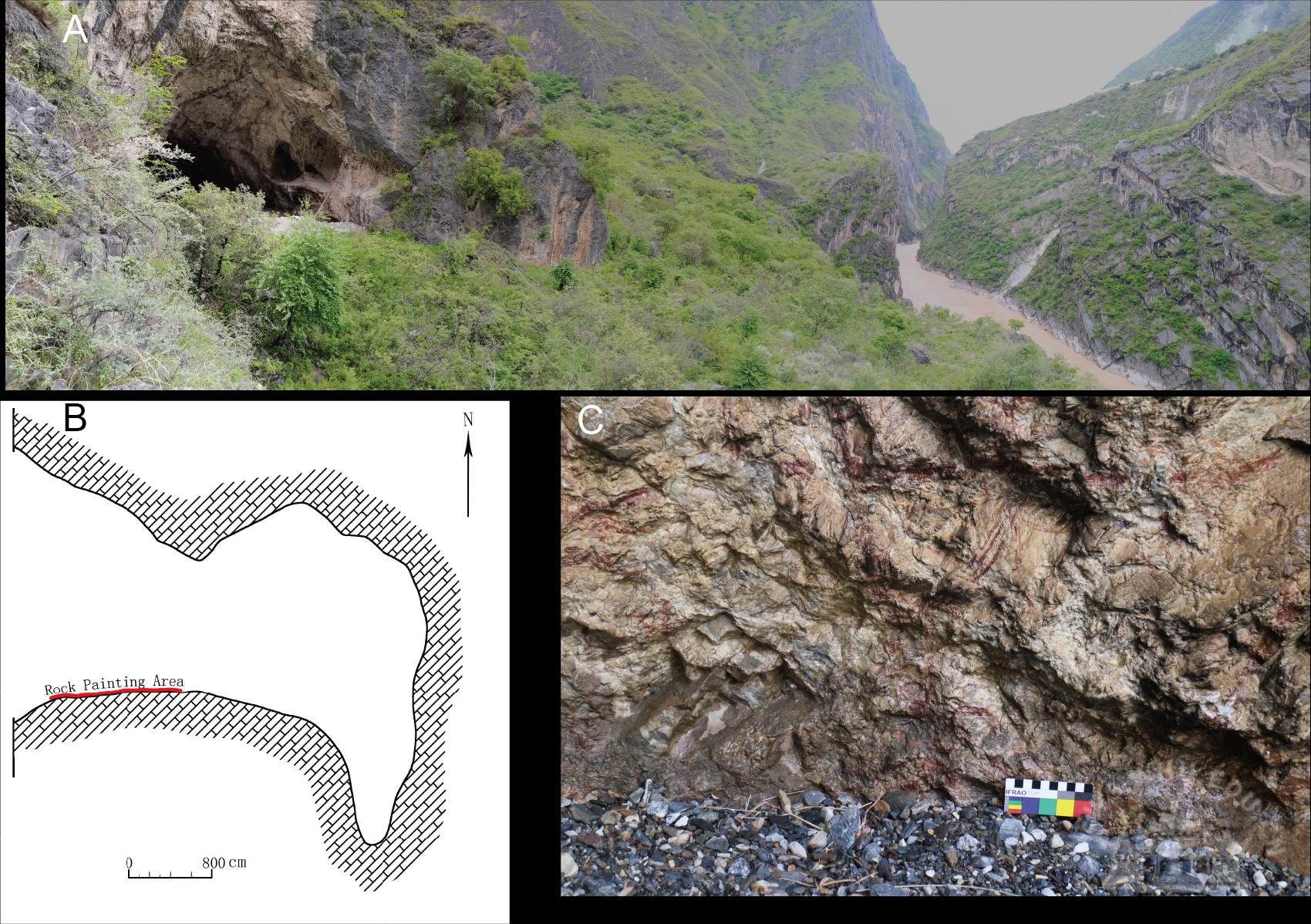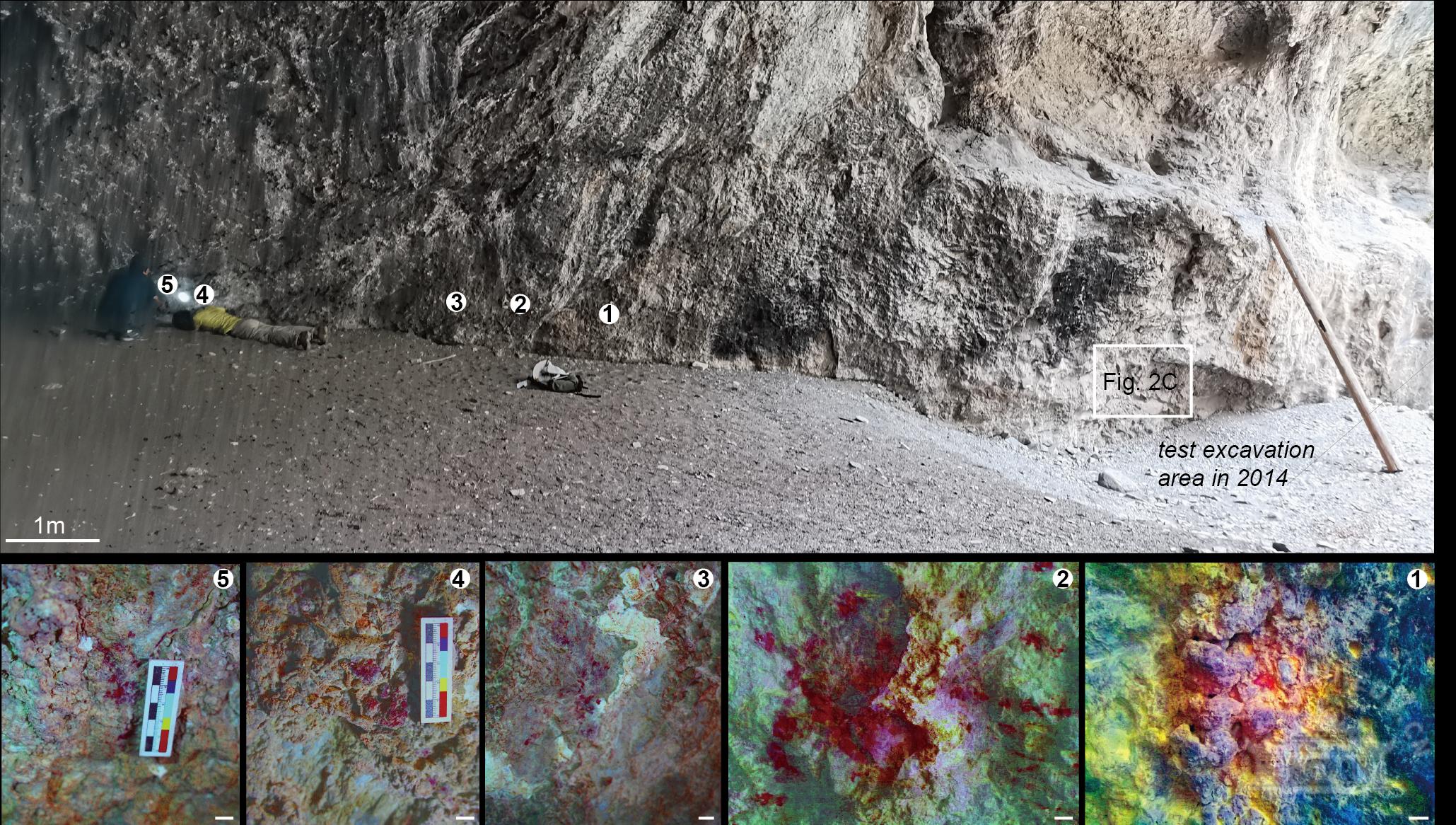On February 24, Journal of Archaeological Science, a top international archaeological journal, published online the latest findings cooperatively made by several institutions, including School of History, Wuhan University, the Institute of Yangtze River Civilization Archaeology, Yunnan Institute of Cultural Relics and Archaeology, Nanjing Normal University, etc. The paper is entitled High-precision U-series dating of the late Pleistocene–early Holocene rock paintings at Tiger Leaping Gorge, Jinsha River valley, southwestern China.
Wu Yun, a PhD student from School of History, Wuhan University, is the first author. Prof. Li Yinghua, Wu’s supervisor and the researcher Ji Xueping from Yunnan Institute of Cultural Relics and Archaeology are the co-authors. Prof. Shao Qingfeng from School of Geography, Nanjing Normal University is the corresponding author.

U-series dating method was conducted to make a high-precision dating of the rock paintings distributed in the Wanrendong Cave in Tiger Leaping Gorge, middle part of the Jinsha River in Lijiang city, Yunnan Province, southeastern margin of the Tibetan Plateau. Through dating the precipitates of carbonates on the rock paintings, they found that at least three painting phases in Wanrendong Cave could be precisely constrained: ∼13,000–13,580 yr B.P., ∼10,540–10,830 yr B.P., and ∼8370–8700 yr B.P., indicating that these paintings are created during the Pleistocene-Holocene transition, substantially earlier than the timing of agriculture in Yunnan Province (∼4600 yr BP). Combined with the information from Paleolithic relics, it can be inferred that these paintings were created by Paleolithic hunter-gatherers.

Rock paintings in Wanrendong Cave. (A) A field view of Wanrendong Cave and Jinsha River in Tiger Leaping Gorge. (B) A plan view of Wanrendong Cave. (C) Rock paintings near the cave entrance.

Sampling speleothems in Wanrendong Cave for U-series dating of rock paintings.

Paleoclimate records over the past 20 ka and the U-series ages of the rock paintings in Wanrendong Cave.
The past century has witnessed the discovery of thousands of rock art sites in China. Based on the distribution, style and technique, Prof. Zhang Yasha from the Rock Art Research Association of China (RARAC), Minzu University of China divided the rock art in China into four distinct geographical regions: the northern grassland region, eastern coast region, southwestern mountainous region, and the Tibetan Plateau. However, dating of rock paintings remains difficult worldwide. Due to the lack of suitable dating materials, Paleolithic rock art with reliable dating has not been found yet in east Asian continent. Located near the southeastern margin of the Tibetan Plateau and neighboring southeast Asian countries, Yunnan Province boasts numerous rock paintings, which are mainly distributed in Lancang River and Jinsha River areas. The Jinsha River rock art is dominated by paintings usually in outline and realistic form to accurately and vividly depict animals like buffalo, deer, Pseudois nayaur, goat, boar, muntjac, roedear, monkey, wild horse, wild donkey, bear and tiger. A few human figures, bows and arrows, hand prints and abstract paintings were also present. With the longest history among the recorded rock art in the east Asian continent, Jinsha River rock art is a unique category distinct from rock paintings found in other regions in China but similar to the Paleolithic rock art found in France, Spain, Southeast and South Asia. Jinsha River rock art serves as an important carrier of prehistoric culture of the upper reaches of Yangtze River and is of great significance to the exploration of the culture root of the region.
In 2008, the team initiated their investigation and study of the rock painting relics in Jinsha River basin with the core at Yulong County, Ninglang County in Lijiang City, and Shangri-la County in Diqing Tibetan Autonomous Prefecture. Under the background of the international study of rock art, the study of Jinsha River rock art is carried out under the framework of regional prehistoric archaeological culture research, including the overall research on paleoanthropology, paleontology, paleometeorology, and paleogeography. The previous researches have proved that Jinsha River rock art is part of the hunter-gatherers rock art and shares similar style with the cave rock art in Magdalenian period of Europe Paleolithic times. Recent technical development in high-precision U-series dating enables the paper to give more precise and adequate empirical data. The research is the first to provide definite evidence that Jinsha River rock art can be dated back to the late Pleistocene and early Holocene, proving that Jinsha River rock art is the earliest with accurate dating data in China and east Asia.
It is reported that Jinsha River rock art was first discovered in 1988. With efforts of cultural workers and archaeologists generation after generation, at least 70 rock art sites have been found in Jinsha River region, making the region among regions with the most rock paintings. The diversity and long history of these paintings show that they are important cultural heritages in Southwest China, whose unique style and geographical position are valuable for studies of communication and relations between the region’s prehistoric people and their counterparts in north Eurasia, Southeast and South Asia. The research also kicks off the discovery and study of China’s Paleolithic painted rock carvings with scientific dating method.
This research was funded by the National Natural Science Foundation of China (grant 41877430) and State Administration of Cultural Heritage of China (grant 4-13-18-5300-005).
Link to the paper: https://doi.org/10.1016/j.jas.2021.105535
Rewritten by Shen Le
Edited by Dong Xiaoqian, Sylvia and Hu Sijia